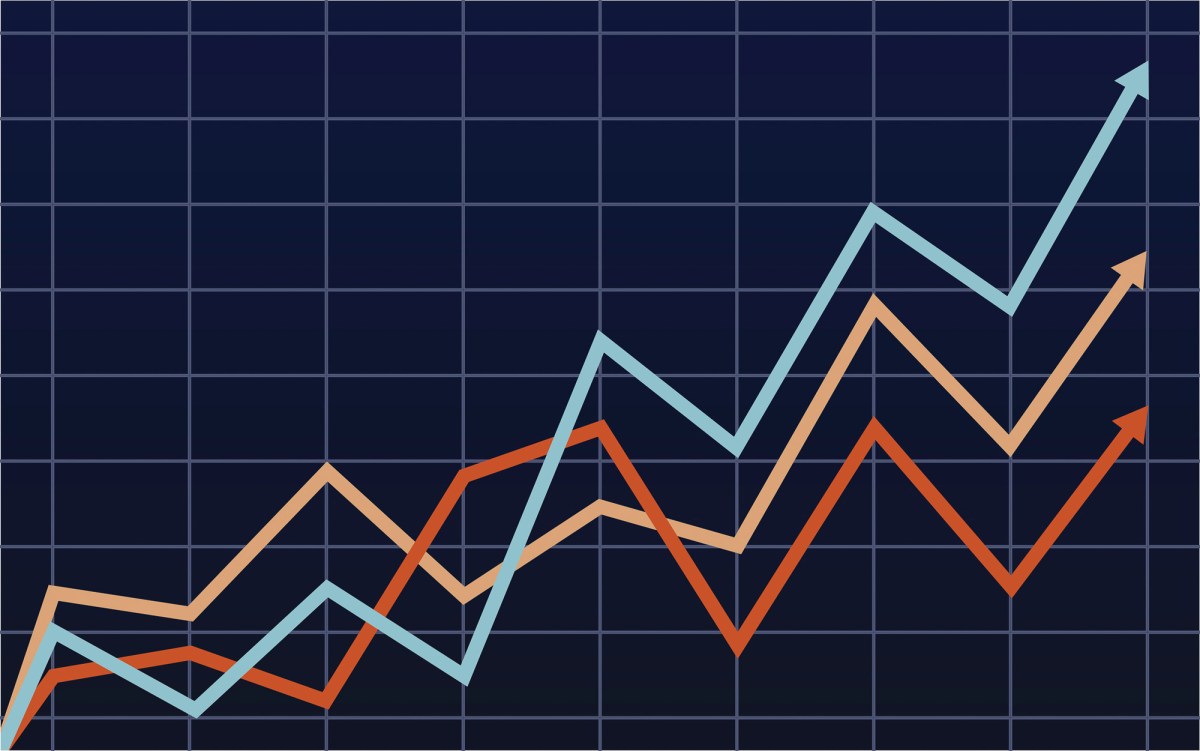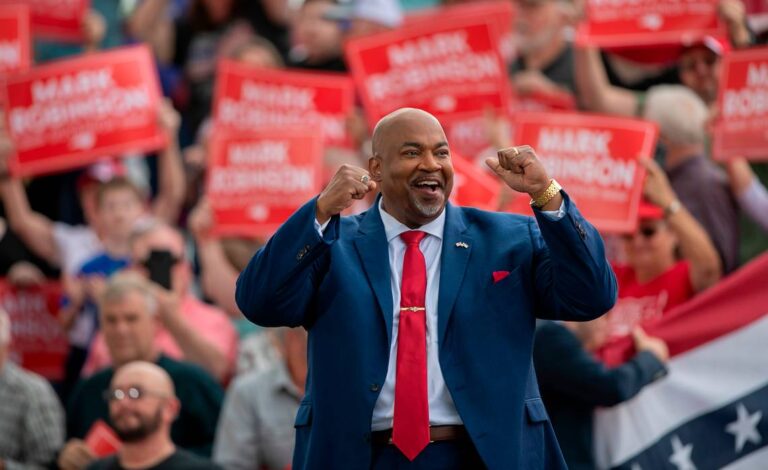The economy is too hot. Yet, the economy is headed for a recession.
The housing market is in the dumps. Yet, new home sales are at their highest level in 10 months.
There are nearly two jobs for every unemployed person. Yet, layoffs are rising.
The Federal Reserve has lost the plot on inflation. Yet, Fed Chairman Jerome Powell says disinflation “has begun.”
Each of the statements is true. No wonder the economy appears so confusing to everyday Americans. And not just the common folk: Legendary investor Warren Buffett recently told shareholders of Berkshire Hathaway that he and partner Charlie Munger “firmly believe that near-term economic and market forecasts are worse than useless.”
Good News Is Bad
With that in mind, here’s how the experts see 2023 shaping up for the economy. The Federal Reserve Bank of Atlanta has a first-quarter economic growth forecast of 2.3%. Admittedly, that is a drop from a 2.7% estimate issued a few days ago but it’s well above the 0.7% estimate at the beginning of the year.
Paradoxically, that’s “bad news,” as it could suggest the Fed has much more work to do in curbing inflation that hit 40-year highs during the middle of the summer. That means higher borrowing costs for businesses and consumers alike, more of the “pain” that Powell said last summer was needed to bring inflation back down to the 2% average annual level it has decreed as its target.
It’s a problem for investors as well as consumers. Higher interest rates crimp stock prices as the value of future earnings becomes muted when the price of money moves higher. That explains why the stock market had a bad February after it decided in January that things were good. The S&P 500, a proxy for the overall market, gained 6.18% in the first month of the year. February brought a reversal, with a loss of 2.6%.
Part of the reason for the sea change in sentiment was a “surprise” increase in consumer spending in January that rattled markets when it was reported in late February. Turns out that nearly $400 billion worth of cost-of-living increases for Social Security recipients and adjustments to the tax brackets on account of inflation helped drive income higher in January. All of this at a time the Fed is trying to drain money from the financial system.
A New York State of Mind
How people feel about the economy is often a reflection of their place in life. If they own assets like houses and stocks, they tend to feel better when the values of those rise. If they have jobs and think they can keep them, they may be more willing to spend. But if prices rise more than their earnings and the price of gasoline is high, they get grumpy.
Trouble is, just about all of that has happened over the past few years. House prices rose at an abnormal pace during the coronavirus pandemic and resulting recovery. Stocks did well for a while, too, before entering a bear market in 2022 and then picking up late in the year on the hope the Fed was making headway on inflation and would “pivot” to either a pause in interest rates or even reversing course by cutting rates if the economy entered a recession. That hope now seems gone.
Wall Street economists tend to frame their thoughts on the economy around the performance of the markets. After all, their clients are investors.
“If the stock market is up, they’re bullish,” says Nanette Abuhoff Jacobson, global investment strategist at Hartford Funds. “If it’s down, they’re incredibly bearish.”
Conversely, economists working in academia, government or business organizations tend to emphasize the health of the labor market, inflation or overall growth and how that affects workers or government policy. It’s an oversimplification but might help the lay person make sense of economic commentary.
As for Jacobson, she says the economy is being buoyed by the strength of the consumer but still expects a recession on the horizon.
“I just don’t think now is the time to tell people to party,” she says.
Jobs, Jobs, Jobs
There’s also a question of messaging. Turn on any cable channel and it’s likely there will be a report about “massive layoffs.” But the unemployment rate is at 3.4%, pretty much historically low. And on Thursday the number of people filing for first-time unemployment claims fell again to 190,000. That is a very low number.
Many of the layoffs announced are just that – announcements or even cuts of open positions and reductions through attrition. While they grab headlines, the overall rate is quite low so far. And many of those who are being laid off are finding new jobs very quickly – so fast, in fact, they never file for unemployment.
Take Microsoft, for example. The tech giant said in January it would lay off 10,000 people worldwide – roughly 5% of its total workforce. It is a big number, but Microsoft increased its employment in the past three years by 36%. So, it will still have 48,000 more workers after the announced layoffs than it had three years ago, assuming no more cuts.
Like others in its industry, Microsoft bulked up during the pandemic. As the economy slows and transitions away from the stimulus-driven state of the pandemic, companies are finding they need fewer workers or different kinds of workers. In January, while the tech industry was shedding workers, the leisure and hospitality industries added 128,000 employees and health care posted a gain of 58,000 jobs. Those two sectors were the most adversely affected by the pandemic and its shutdowns.
“The one thing I would point to as to where we are is it’s such a tight job market,” says Dec Mullarkey, managing director at SLC Management. “That is one thing that is buffeting everything. That’s one thing that is significantly different this time.”
Consumers Can’t Make Up Their Minds
It’s not only economists who have trouble agreeing about the state of the economy. Two widely followed measures of consumer perspectives are telling different stories.
The Conference Board’s monthly consumer confidence index fell for the second consecutive month in February, with the index measuring future economic conditions falling sharply from January and firmly in a territory that often signals an oncoming recession.
However, the University of Michigan’s consumer sentiment index improved in February, with a 12% rise in those saying the economy will improve in the year ahead.
To some degree, the surveys reflect some underlying differences in the methodology with the Michigan survey more sensitive to changes in personal or household factors like gasoline prices while the Conference Board reflects more changes in the labor market and inflation.
“There has been a divergence among the three U.S. national consumer confidence indices for well over a decade, and that divergence has become more pronounced recently,” the Real Economy blog penned by economists Joseph Brusuelas and Tuan Nguyen noted a year ago. “But the gap between the University of Michigan’s survey and those by the Conference Board and Langer Research Associates (formerly the ABC/Washington Post survey) became more pronounced in 2021.”
More general opinion polls also show a split among Americans on their views of the economy depending on their political affiliation, as can be seen in a February poll from Gallup.
“Republicans’ expectation that inflation will rise is 23 points higher than Democrats’, and Republicans are more likely to predict the stock market and GDP will go down,” the poll found. “The only metric that doesn’t garner a majority of Republicans holding negative views is unemployment, yet nearly half think it will rise in the coming months, while the others are divided over whether it will decrease or remain steady.”
A high, but nearly equal number of Republicans and Democrats foresee interest rates rising during the first six months of 2023, but on all the other aspects of the economy Republicans were “much more pessimistic than Democrats,” Gallup found.
“I think the way people form their opinions about the economy has changed,” says George Calhoun, director of the Quantitative Finance Program at the Stevens Institute of Technology.
Years ago, people digested the nightly TV news or read a newspaper to find out what was happening in the economy, and the coverage was even-handed and geared to the average person. A TV reporter would often stand in the aisle of the grocery store or at an automobile dealer’s lot to explain arcane economic data. “You didn’t get the extreme opinions,” Calhoun says, that are now a dime a dozen on Twitter and cable TV.
Calhoun believes that the inflation of the past couple of years will turn out to be “transitory” after all (a word that lives in infamy since it was first uttered by the Fed’s Powell) and that much of what has caused the uncertainty in the economy can be traced to the pandemic and the Russian invasion of Ukraine.
As a columnist for Forbes, Calhoun says he routinely gets trolled about his commentary, with opinions especially heated over recent discussions about the price of eggs.
“Amazing – when I wrote about China’s phony Covid mortality numbers last year, a bevy of Chinese trolls came out to disparage me. Now, what do you know? I have egg trolls – the same fact-free insults, this time from the inflationistas whining about ‘hunger,’” Calhoun tweeted on Wednesday.
Just as everyone is now a political pundit on social media, so too economists have become a dime a dozen – what some in the profession might call a surplus of supply over demand.
Everyone’s a Pilot
For the last year or so, the talk among economists and even the Fed has been about landings. There’s the soft landing that means the economy withstands the rapid increase in interest rates and somehow escapes a recession even though growth may slow to a trickle and unemployment rises by a percentage point or more.
“Some observers proclaimed a recession in the first half of the year (2022) when GDP dropped,” Morningstar Chief U.S. Economist Preston Caldwell wrote Wednesday in the firm’s first quarter 2023 outlook, “but we’ve consistently thought this is mistaken. “Rather the underlying trend in GDP growth has weakened, but it’s remained consistently positive.”
On inflation, Caldwell writes, “our views diverge significantly from consensus. While consensus has partially given up on the “transitory” story for inflation, we still think most of the sources of recent high inflation will unwind in impact over the next few years, providing sustained deflationary pressure.”
Then there’s the hard landing view, where the economy goes into a bad recession, housing prices fall sharply and a large number of people receive pink slips. It’s not a flight most people would choose to be on.
There’s the “no landing” scenario, which may be akin to muddling through – a scenario where the economy continues to grow and inflation recedes, perhaps not to 2% but enough to make everyone happy.
A lot of economists scoff at the notion.
“No landing does not make any sense, because it essentially means the economy continues to expand, and it’s part of an ongoing business cycle and it’s not an event – it’s just ongoing growth,” EY Parthenon Chief Economist Greg Daco told Yahoo Finance recently. “Doesn’t that entail that the Fed will have to raise rates more, and doesn’t that increase the risk of a hard landing?”
Perhaps you have a fear of flying? If so, you can also subscribe to the stagflation argument. That is a bad outcome, for it includes slow or no growth for the economy and higher inflation than the Fed or the markets would like.
‘This Time It’s Different’
The famous investor Sir James Templeton called those four words the most expensive in the English language for investors. They are often used to describe periods when the market seemingly only wants to go up and investors provide all kinds of theories why the party can go on forever.
But, applied to the economy over the past few years, there might be some truth to the phrase.
A once-in-a-lifetime pandemic and the first war on the continent of Europe in nearly 80 years has changed the economy in ways few people anticipated – and the ramifications could well still be playing out.
That’s not to say the end of this cycle will be different in terms of whether a recession ensues or the economy hums along without too much carnage. But it does suggest that the way people feel about the economy and how they react may not have conformed to the normal analyses or will perform the same as during previous periods of high inflation or rising interest rates.
For one thing, most people were not even alive the last time inflation hit 9%, as it did last year. And some industries – notably health care and hospitality – are still struggling to get back to pre-pandemic levels. Offices are still nowhere near as occupied as they were in 2019.
“A lot of people are still highly rattled by what we’ve experienced the past few years,” Calhoun says. “The pandemic, the stimulus, the war in Ukraine and the move by the Fed to a completely new policy – it’s altered people’s way of thinking.”
The Last Word
It’s hard to find an institution with better access to economic data and analysis than the Federal Reserve. So, here’s how its economists see the economy in 2023, hot off the press within the past 48 hours:
“Key data in January suggest that the economy began 2023 on solid footing, although there are some inklings that the pace of retail sales could be slower in February,” Kevin Kliesen, a business economists and researcher at the Federal Reserve Bank of St. Louis wrote in the latest issue of the Regional Economist.
“Continued high inflation rates and a rebound in market-based measures of inflation expectations indicate that downside risks to the economy remain elevated,” he added. “For these reasons, uncertainty about both the pace of economic growth and the degree of disinflation over the near term – as reflected in the consensus forecasts – remains extraordinarily high.”







